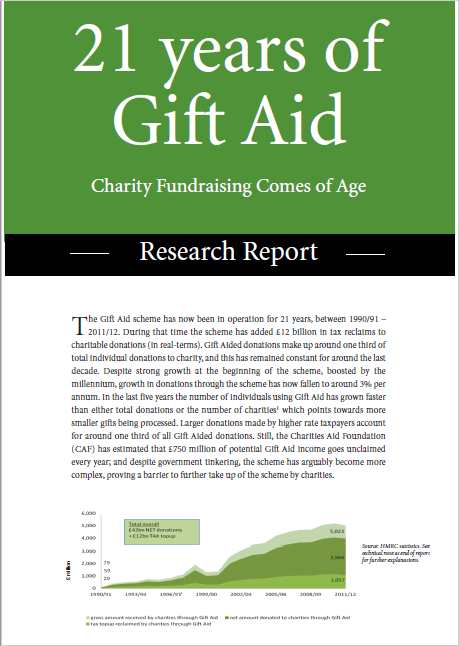Effective Philanthropy
Everyone giving to charity wants to know that they are giving in the most effective way possible. Charitable giving should add more value than just the £$.
There are no die-hard rules here though, and I stress that because I don't believe in rules! What works for one person and one charity may not (and probably won't) work for all.
In this space we'll be examining and trying out some of the latest techniques for giving more effectively so that you can choose what works for you... from place-based giving to matched giving and tax-efficient giving.
Place-based giving
REPORT PUBLISHED 13th September 2018
Place-based giving schemes in England: Funding, engaging and creating stronger communities
Commissioned by the Office for Civil Society (DCMS) this is the largest study of place-based schemes in the UK to date.
The research uncovered a large and growing number of place-based giving schemes across England, and highlights the success of place-based schemes as part of the landscape of charitable giving in the UK. Thirteen case studies reveal a huge amount of collaborative working going on between funders and other organisations which span across the private, public and third sectors, including local councils, local and metro mayors, independent grant-making foundations, businesses and local residents.
Place-based giving schemes in England currently include 21 London Borough Place-based Giving Schemes; 43 Community Foundations; 69 giving circles; plus a plethora of other forms.
It is clear that there is a high degree of disparity in terms of the level of development of local philanthropy ecosystems; and where there are existing place-based giving schemes within these ecosystems; they differ greatly in approach, scale and maturity.
Place-based schemes face a number of challenges. A wide range of interviewees were asked as part of the research about the challenges faced in setting up and growing a place-based giving scheme, and suggestions for potential solutions to overcoming these challenges. Across the spectrum of different place-based schemes the most frequently-mentioned factors were practical considerations first and foremost, with funding taking centre stage.
Interviewees mentioned the importance of both seed funding and ongoing core cost funding, in part to overcome capacity issues and to fund a dedicated development worker. Other challenges faced included building partnerships: with funders, including corporates, and the local community; building a reputation and track record; evaluating impact; establishing and communicating a brand; and avoiding unhelpful competition with already established local charities.
A tale of two Southwarks: Evidencing Southwark Giving
Place-based giving is one of the exciting new ways being used to tackle local needs with support from local people, grant-making trusts and companies.
Southwark has the highest rates of childhood obesity in the UK, coupled with high poverty and overcrowding; yet it also enjoys huge wealth in some areas, leading to massive differences in life chances between neighbourhoods. While Southwark celebrates its high diversity, the community is becoming fractured and displaced due to gentrification.
This report provides the groundwork for Southwark Giving, evidencing the local needs and illustrating issues which local people and charities feel are priorities for further support in the fragile recovery period following the global recession.
Southwark Giving follows the groundbreaking work of Islington Giving and Hackney Giving and is the latest London placed-based giving scheme to find new ways to address hidden, unmet and emerging local community needs.
Community Southwark, the umbrella body for charities and community organisations in Southwark, commissioned this research, with funding from United St. Saviour's Charity, Team London Bridge, Wakefield & Tetley Trust and City Bridge Trust.
This executive summary presages a more detailed full report on Southwark's needs (out in March 2017).
Tax-efficient giving - worth the bother?
21 years of Gift Aid
The Gift Aid scheme has been in operation for 21 years. Find out how much it has raised, how widely it is used and what the future holds in this comprehensive report (with Foreword by Charity Finance Group CEO Caron Bradshaw).
How match-funding can incentivise greater giving
Match-funding is when an employer, the government or philanthropic body matches a charitable donation – usually pound for pound.
After thorough examination, this report finds that, in general:
More people are likely to donate to charity and give more money if they know their donation will be match-funded.
Commissioned by innovative giving enabler: The Big Give, donation management experts: Charities Trust and CSR giant : RBS this report examines match-funding's efficacy in charitable appeals, payroll giving and product donation.
The research report, "A Great Match”, analysed data from 138,000 charitable donations, and is the first-ever in depth research carried out into match-funding in the UK.
The headline results show that donors gave 2.5 times more to charity on average when match-funded. The average value of a matched donation was £333 compared with only £132 for those which were un-matched.
Why tax incentives are important to charitable giving and why they shouldn't be capped as the Chancellor proposed in 2012
As an Economic Psychologist Cat's view of the Budget 2012 proposal to put a cap on income tax reliefs for higher rate taxpayers, and including charitable tax reliefs, was that it was an unmitigated disaster for the Chancellor and the Government, but not necessarily for the reasons you might think. This paper explores why that is.







